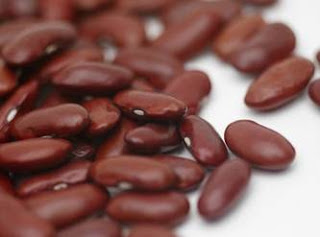Bathing suit season is upon us (as if you needed a reminder, right?)! One of the most common concerns I hear this time of year from the Beauty Detox community is banishing belly fat.
The gut/belly area is certainly is a sensitive body zone for even the most confident. Let’s explore this “middle” ground:
Losing Weight in the Abdominal Area
Retaining fat around your stomach is often a sign of toxic buildup in your system. When your body is toxic from chemicals in the foods you eat and your environment, it seeks to protect you as best it can. One of the ways this happens is that your body retains fat in order to store the toxins so they are insulated from your organs. Detoxifying, then, is a great step towards losing weight in your abdominal area. Let’s look at some steps you can take to detoxify your system.
- Eat organic foods
- Minimize or eliminate processed and fast foods
- Eliminate refined sugar
- Eliminate carbonated beverages and energy drinks and drink pure, fresh water instead
- Start each day with a glass of warm water containing organic lemon
- Eliminate dairy and gluten grains
- Drink water/liquids 30 minutes before or 60 minutes after meals, not while eating
- Take probiotics and eat probiotic-rich foods
- Simplify your meals as much as possible
- Avoid slow and difficult to digest foods
- Eat fruit on an empty stomach
Along with these simple rules, you can also work on blasting belly fat by eating healthy foods that will help keep your stomach region slender.
1. Glowing Green Smoothie
I realize this is almost always my top recommendation, but there’s a reason the GGS is my signature drink. It is low in calories, high in fiber, and packed with nutrition. That means it fills you up and provides you with the nutrients and enzymes your body needs for peak performance. Because it is blended, it also allows your body to minimize the energy necessary for digestion so it can be used for beauty energy and fat burning.
2. Chia
These nutritious little seeds are great for fat loss, because they help stabilize blood sugar,contain lots of fiber, and improve your sensitivity to insulin. Insulin is one of your body’s main fat storage hormones, and improving insulin sensitivity can reduce the amount of insulin circulating in your bloodstream, which can lead to fat loss. Chia is also rich in Omega-3 fats, and the seeds are filling because they contain fiber. Try a few tablespoons of chia in unsweetened almond milk with some vanilla and stevia for a delicious and filling beverage.
3. Cayenne
The great thing about cayenne is that it is so easy to incorporate into meals. Spice up a salad, some quinoa pasta, or soup with a pinch of cayenne, and you’ll increase your body’s thermogenesis. Cayenne contains capsaicin, which has been shown in studies to enhance burning of belly fat.
4. Oat Groats
Oat groats are oats in their most basic form – a true whole grain. Research has shown that eating whole grains can help increase weight loss. Oat groats are also gluten-free and well tolerated, meaning they are less likely to cause belly bloat. Soak them overnight, rinse, and blend with water, stevia, and a little cinnamon for a healthy oatmeal.
5. Greens
Like your glowing green smoothie, fresh greens will help fill you up, giving your body the enzymes it needs for full digestion. Greens are also high in fiber and nutrition and they don’t raise your blood sugar. Greens go well beyond lettuce and spinach. Try kale, arugula, cabbage, endive, fennel, purslane, parsley, and other nutritious, organic greens for a delicious way to rid yourself of fat.































